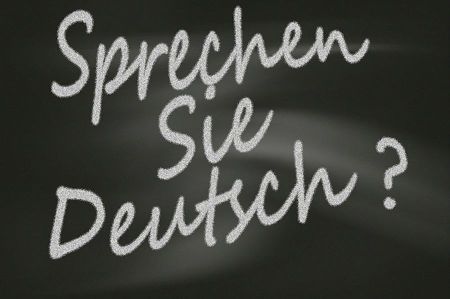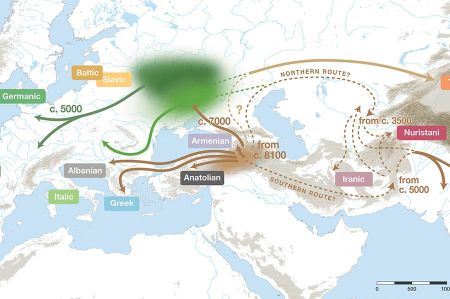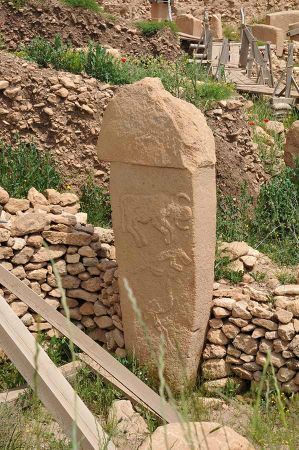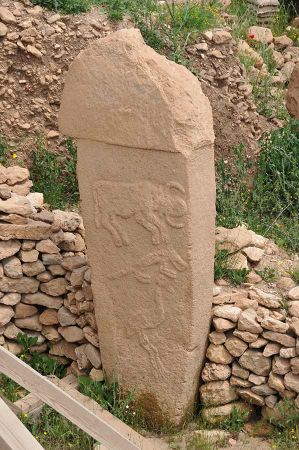German language - Indo-European languages from Anatolia?
- Written by Portal Editor
The New Zealand linguists Quentin Atkinson and Remco Bouckaert are currently attracting attention in the media with their research results, as they claim that the German language also had its origins in Anatolia.
It is indeed an interesting question, because too many terms in everyday language use in different languages suggest that they have the same origin. Is there therefore a common cradle of languages?
“Mother” is strikingly similar in Russian, Danish, Hindi, Albanian and Italian
 To give just one example, the word for “mother” is strikingly similar in the languages Russian, Danish, Hindi, Albanian and Italian. However, can these similarities prove that the region of today's Turkey can be the birthplace of many very different languages? In any case, a number of scientists are convinced of this. With the help of modern and very complex computer programs that were actually created to illustrate the spread of epidemics on maps, they calculated their theories. The results were apparently so astonishing that this possibility of tracing the origins of languages was studied very intensively and regions of origin became clear.
To give just one example, the word for “mother” is strikingly similar in the languages Russian, Danish, Hindi, Albanian and Italian. However, can these similarities prove that the region of today's Turkey can be the birthplace of many very different languages? In any case, a number of scientists are convinced of this. With the help of modern and very complex computer programs that were actually created to illustrate the spread of epidemics on maps, they calculated their theories. The results were apparently so astonishing that this possibility of tracing the origins of languages was studied very intensively and regions of origin became clear.
It is very important for biologists to get to the origins of a pandemic because this is the only way to combat the source of the pandemic. They take samples from different locations and sequence the DNA in complex steps. Now the development can be read into maps and thus the spread can be tracked. With this type of family tree, you can then find your way back to the origin. In this way, population relationships between groups from Italy and Anatolia (Etruscans) have already been proven.
Modern linguists have used basically the same techniques. First, huge data collections of similar words were collected. The Danish word for mother became “Moeder”, in Spanish “madre”, in English “mother”, in Russian “mat”, in Persian “madar”, in Greek “mitera” and in Hindi “mitera”. “mam” fixed. Other similarities are easy for everyone to understand. Now a family tree of the languages was created and the words were assigned according to time and place. Reports about the appearance and disappearance of related words were also recorded in appropriate files. Experts call words that have developed from an original word cognate.
Now a heated debate has been sparked again
 In particular, the scientists around Quentin Atkinson and Remco Bouckaert are convinced that they have succeeded in determining the evolution of the Indo-European language family so clearly that the region of origin became visible through linguistic development. First published a few days ago in the scientific journal Science, this publication caused quite a stir. Quentin Atkinson's scientists based their research on similarities in more than a hundred different languages that are still in use between Iceland and India today. Now a heated debate has been sparked again as to whether the origin of languages can be derived from the evolution of humans and their spread.
In particular, the scientists around Quentin Atkinson and Remco Bouckaert are convinced that they have succeeded in determining the evolution of the Indo-European language family so clearly that the region of origin became visible through linguistic development. First published a few days ago in the scientific journal Science, this publication caused quite a stir. Quentin Atkinson's scientists based their research on similarities in more than a hundred different languages that are still in use between Iceland and India today. Now a heated debate has been sparked again as to whether the origin of languages can be derived from the evolution of humans and their spread.
So far, the vast majority of researchers have been convinced that languages were also spread by groups of nomadic people around 5,000 - 6,000 years ago during the Bronze Age. The people of this time already used horses and bicycles, so they spread from the Caspian Sea to what is now Ukraine within a relatively short period of time. Other groups of scientists are convinced that languages were consolidated and spread with the first settlements, i.e. the beginning of agriculture. Accordingly, for this group of scientists, the origin of the languages in what is now Turkey lies around 8,000 to 9,500 years ago.
 Scientists today prove relatively clearly that the second theory is probably the correct one, because due to the huge amounts of data that the computers were fed with regarding the widely used new and old words, it can be proven relatively clearly that the word roots predominantly come from Anatolia. Quentin Atkinson is convinced that agriculture and farming were one of the driving forces that contributed to the development of linguistic diversity. As a competent evolutionary psychologist at the University of Auckland in New Zealand, he sees his results based on archaeological as well as genetic findings.
Scientists today prove relatively clearly that the second theory is probably the correct one, because due to the huge amounts of data that the computers were fed with regarding the widely used new and old words, it can be proven relatively clearly that the word roots predominantly come from Anatolia. Quentin Atkinson is convinced that agriculture and farming were one of the driving forces that contributed to the development of linguistic diversity. As a competent evolutionary psychologist at the University of Auckland in New Zealand, he sees his results based on archaeological as well as genetic findings.
“It wasn't as if all the hunters in Europe looked over the fence and saw that their neighbours were growing something and then decided to do the same,” says Atkinson, describing his theories. But there has been real progress and language development also shows that a cultural movement has taken place. Hunters not only accepted the plod as a tool, but also the culture and language.
 “This represents a major breakthrough,” writes University of Cambridge archaeologist Colin Renfrew in an accompanying article in the same issue of Science. But not every scientist is convinced of this. “So much of the study was interpreted arbitrarily,” says Victor Mair, a Chinese language expert at the University of Pennsylvania. Atkinson's model is based on logical leaps when it comes to the rate of development of languages and how they spread.
“This represents a major breakthrough,” writes University of Cambridge archaeologist Colin Renfrew in an accompanying article in the same issue of Science. But not every scientist is convinced of this. “So much of the study was interpreted arbitrarily,” says Victor Mair, a Chinese language expert at the University of Pennsylvania. Atkinson's model is based on logical leaps when it comes to the rate of development of languages and how they spread.
The scientists led by Quentin Atkinson and Remco Bouckaert compiled their family tree and combined the information with the current distribution area of the respective language. This is how they came across Anatolia as the likely place of origin of the Indo-European languages. Between 4,000 and 6,000 years ago, the individual subfamilies of Indo-European, such as the parent languages of Celtic, Germanic or Indo-Iranian, split off. Individual languages within the subfamilies then developed around 4,500 to 2,000 years ago, i.e. something like German within the Germanic languages.
It will already be interesting to see what further findings the researchers and scientists will come across.
Please read as well:
